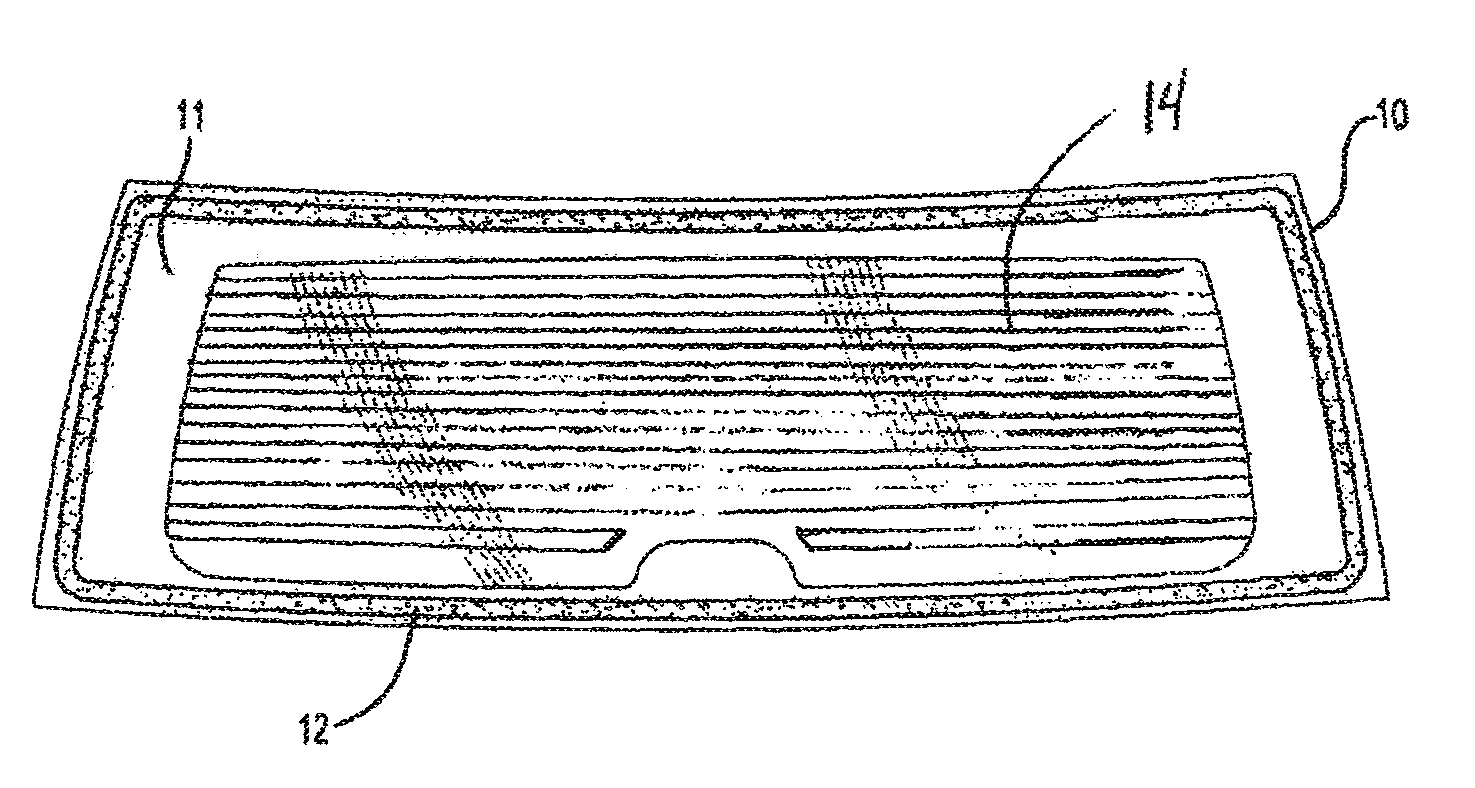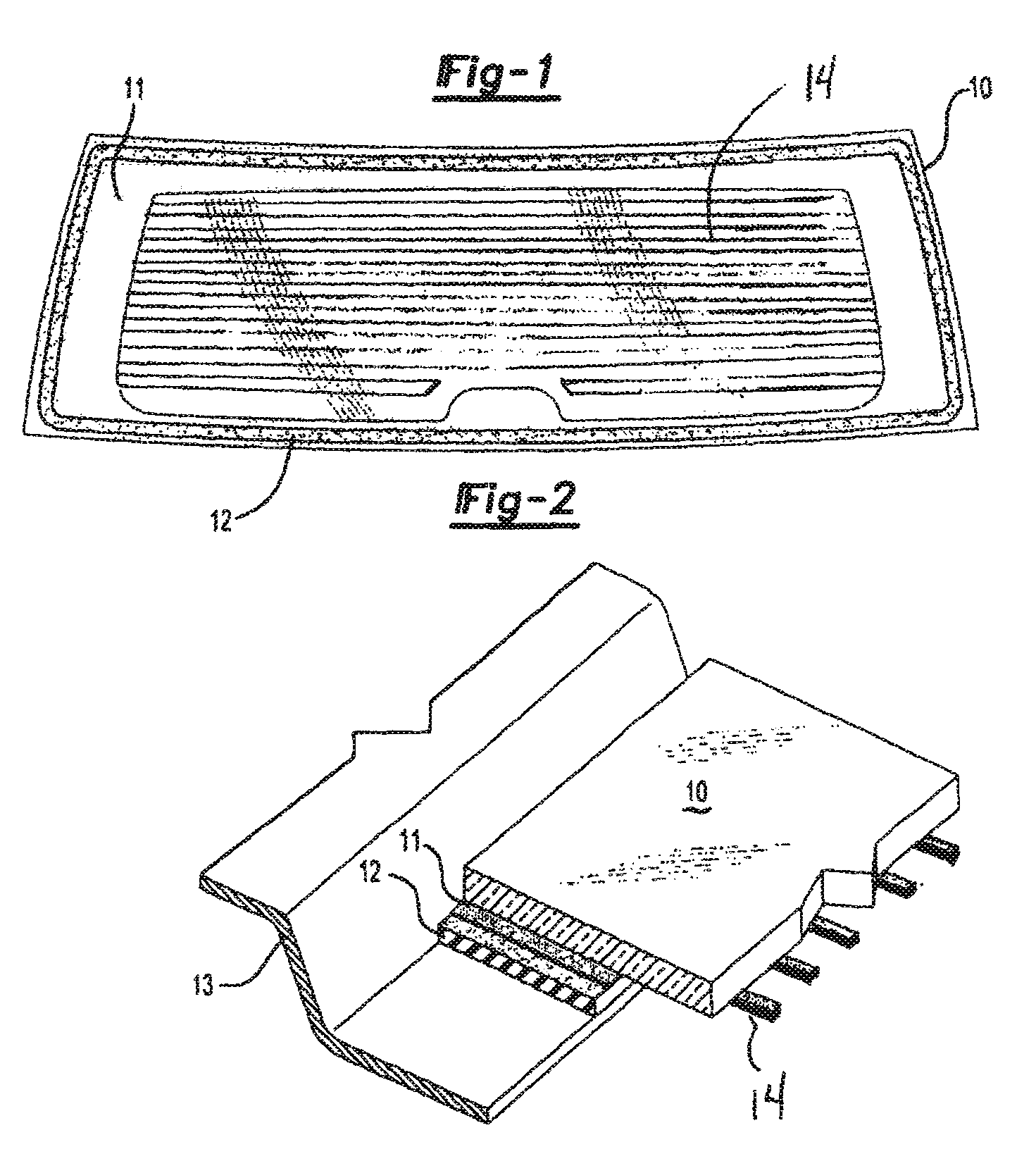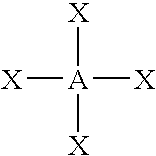Composites and methods for conductive transparent substrates
a transparent substrate and composite material technology, applied in the field of transparent substrates, can solve the problems of limiting the use of certain materials and many transparent plastics not enduring extreme conditions
- Summary
- Abstract
- Description
- Claims
- Application Information
AI Technical Summary
Benefits of technology
Problems solved by technology
Method used
Image
Examples
example 1
[0105]The following Tables 1 and 2 illustrate preparation of an example of a conductive composite material in accordance with the present invention. The ingredients of Table 1 are mixed as described to form the matrix, and then combined with the ingredients of Table 2 such that the composition of Table 1 comprises about 20 weight percent of the resulting composite. The resulting composite is cured by exposure to ultraviolet radiation.
[0106]
TABLE 1Add the following to a Max 60 cup:ComponentGramsWt. %SR 9003 propoxylated neopentyl glycol diacrylate11.8218.67SR 506D isobornyl acrylate2.53.95SR 9020HP propoxylated glycerol triacrylate57.90PTZ Phenothiazine (inhibitor)0.10.16Vinyltrimethoxysilane (moisture scavenger)11.58ESACURE KTO46 photoinitiator57.90ESACURE TZT photoinitiator34.74FOAMBLAST 20F silicone defoamer0.30.47BYK UV 3510 polydimethylsiloxane wetting agent0.10.16Speed-mix for 5 min at 3000 RPMCN 983 Aliphatic urethane diacrylate1523.691:1 MOL ADDUCT OF SR 9003: DYN 11221523.69...
example 2
[0109]The following Tables illustrate the preparation of an example of a conductive composite material in accordance with the present invention. This example illustrates a composition formed generally by the steps of mixing monomers (optionally in the presence of wetting agents), adding a conductive material thereto, followed by adding a photoinitiator, and optionally an organofunctional silane. Like results are expected for concentrations within about plus or minus 10% of the stated values.
[0110]
TABLE 3Add the following to a Max 60 cup:ComponentGramsWt. %Isobornyl acrylate (SR 506, Satomer)5.995.99Tripropylene glcol diacrylate (SR306, Sartomer)2.832.83Acrylic acid2.512.51Aliphatic urethane acrylate9.969.96(CN985B88 and CN964A85, Sartomer)Polyether modified polydimethylsiloxane0.150.15(BYK UV 3510, BYK-Chemie)Speed-mix at 1000 to 1500 RPM for 5 minsRepeat speed-mix at 1000 to 1500 RPM for minsTotal21.4421.44
[0111]To the cup of mixed ingredients from Table 3, the conductive material ...
PUM
| Property | Measurement | Unit |
|---|---|---|
| temperature | aaaaa | aaaaa |
| temperature | aaaaa | aaaaa |
| temperature | aaaaa | aaaaa |
Abstract
Description
Claims
Application Information
 Login to View More
Login to View More - R&D
- Intellectual Property
- Life Sciences
- Materials
- Tech Scout
- Unparalleled Data Quality
- Higher Quality Content
- 60% Fewer Hallucinations
Browse by: Latest US Patents, China's latest patents, Technical Efficacy Thesaurus, Application Domain, Technology Topic, Popular Technical Reports.
© 2025 PatSnap. All rights reserved.Legal|Privacy policy|Modern Slavery Act Transparency Statement|Sitemap|About US| Contact US: help@patsnap.com



